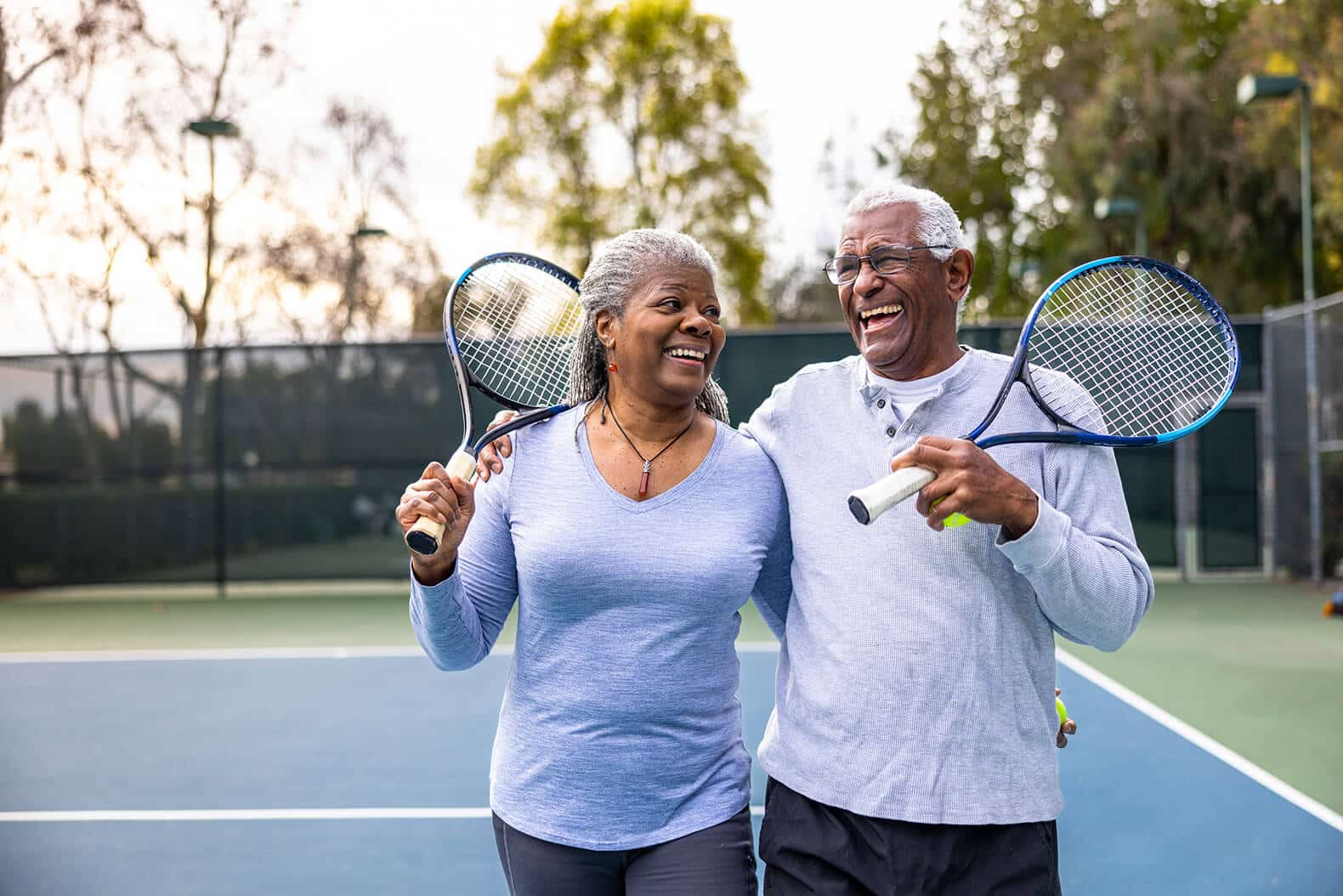So much of retirement planning focuses on finances, and for good reason—retirement is a challenge without the finances to pull it off. But retirement in the modern age is about so much more than money. Health and well-being, freedom and independence, and relationships and social connections all matter in a well-rounded retirement.
We surveyed over 1,000 people over 55 to find out what matters most to those planning their retirement lifestyle. Spoiler: relationships and personal fulfillment take a backseat to family, and most people over 55 prefer downsizing to snowbirding in retirement.
Key Takeaways
- Nearly two-thirds of Americans over 55 say health and wellness don’t matter most in retirement.
- Just 13% of Americans over 55 prioritize personal fulfillment and relationships in retirement.
- More Americans over 55 would rather downsize to a smaller home than snowbird in retirement.
- More than half of Americans believe staying active and spending time with family are key aspects of an active retirement lifestyle.
- Over 90% of Americans over 55 don’t find purpose and fulfillment in learning new skills.
Put Away the Calculators: Health and Wellness Matters More Than Finances to Americans Over 55
It’s no secret that finances in retirement are a huge concern, especially regarding health care and where to live. However, it turns out that for 36% of Americans over 55, health and wellness are more important than financial security in retirement.
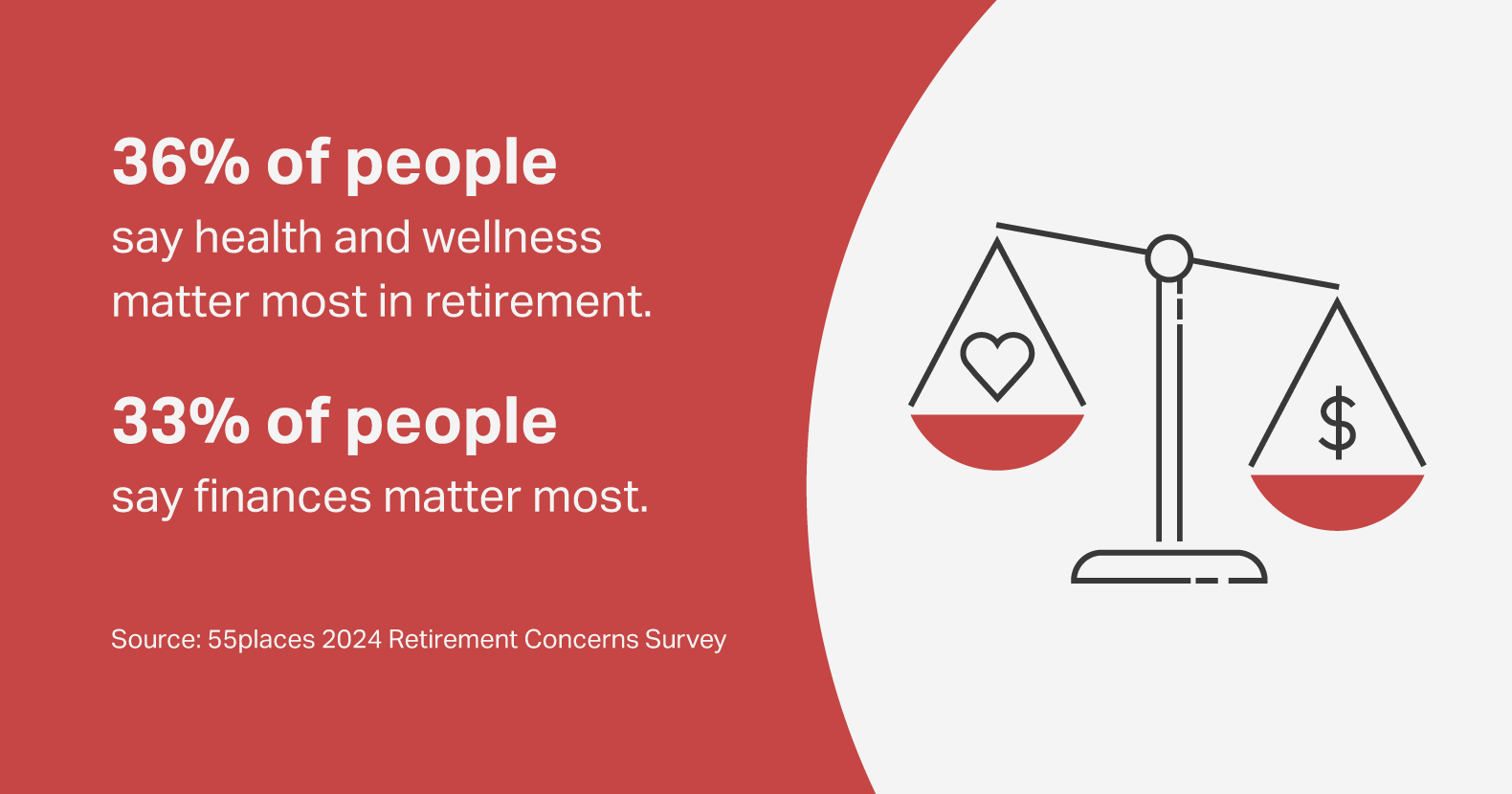
According to the National Council on Aging, only 5% of people over 60 have no medical conditions that need treatment. In fact, nearly 80% manage two or more medical conditions. Given these statistics, it makes sense that health and wellness should be important in retirement.
However, nearly two-thirds of respondents did not identify health and wellness as important in retirement. This may concern their families and friends who want to see them live longer and healthier lives. Prioritizing health and wellness is key to maintaining mobility and overall health so you can enjoy your retirement fully.
Surprisingly, what’s most important varies slightly between genders.
| Retirement Concern | Men | Women |
| Health and Well-Being | 35% | 36% |
| Financial Security | 29% | 36% |
| Freedom and Independence | 12% | 8% |
| Leisure and Relaxation | 10% | 8% |
| Purpose and Fulfillment | 7% | 6% |
| Relationships and Social Connections | 5% | 5% |
| Personal Growth and Learning | 3% | 2% |
Note that due to rounding, totals in the above chart may not sum to exactly 100%.
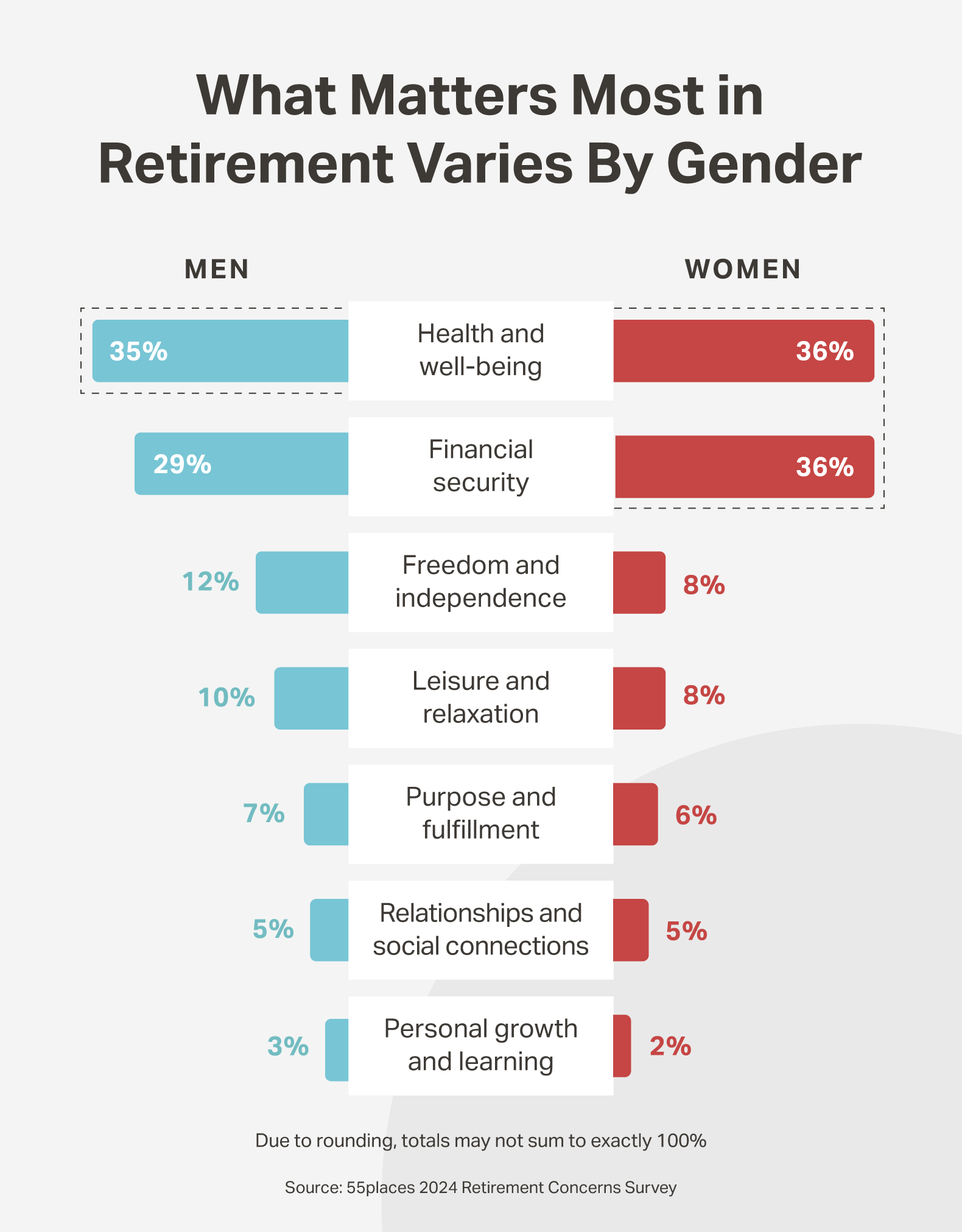
Dusty Social Calendars: Americans Over 55 Aren’t Prioritizing Personal Fulfillment and Relationships
Only 13% of Americans over 55 prioritize personal fulfillment and relationships in retirement. This may be a contributing factor to why 28% of retirees experience depression, according to a recent study published in Clinical Interventions in Aging.
A study in Gerontology and Geriatrics estimates that 20% of older people are considered socially isolated. This is a risk factor for sedentary life, cardiovascular disease, obesity, inflammation, and other health issues that can negatively impact a person’s quality of life in retirement.
Maintaining social connections and developing a sense of purpose in retirement is important. Many people get these from their workplace, so when they retire, they feel lonely. To make up for this, retirees can volunteer, take a class, or join a social club for a well-rounded and rewarding retirement.
Forget the Beach: Most Americans Would Rather Downsize to a Smaller Home
One of the biggest retirement worries is often centered on where to live, especially since where you live is one of the largest parts of your retirement budget.
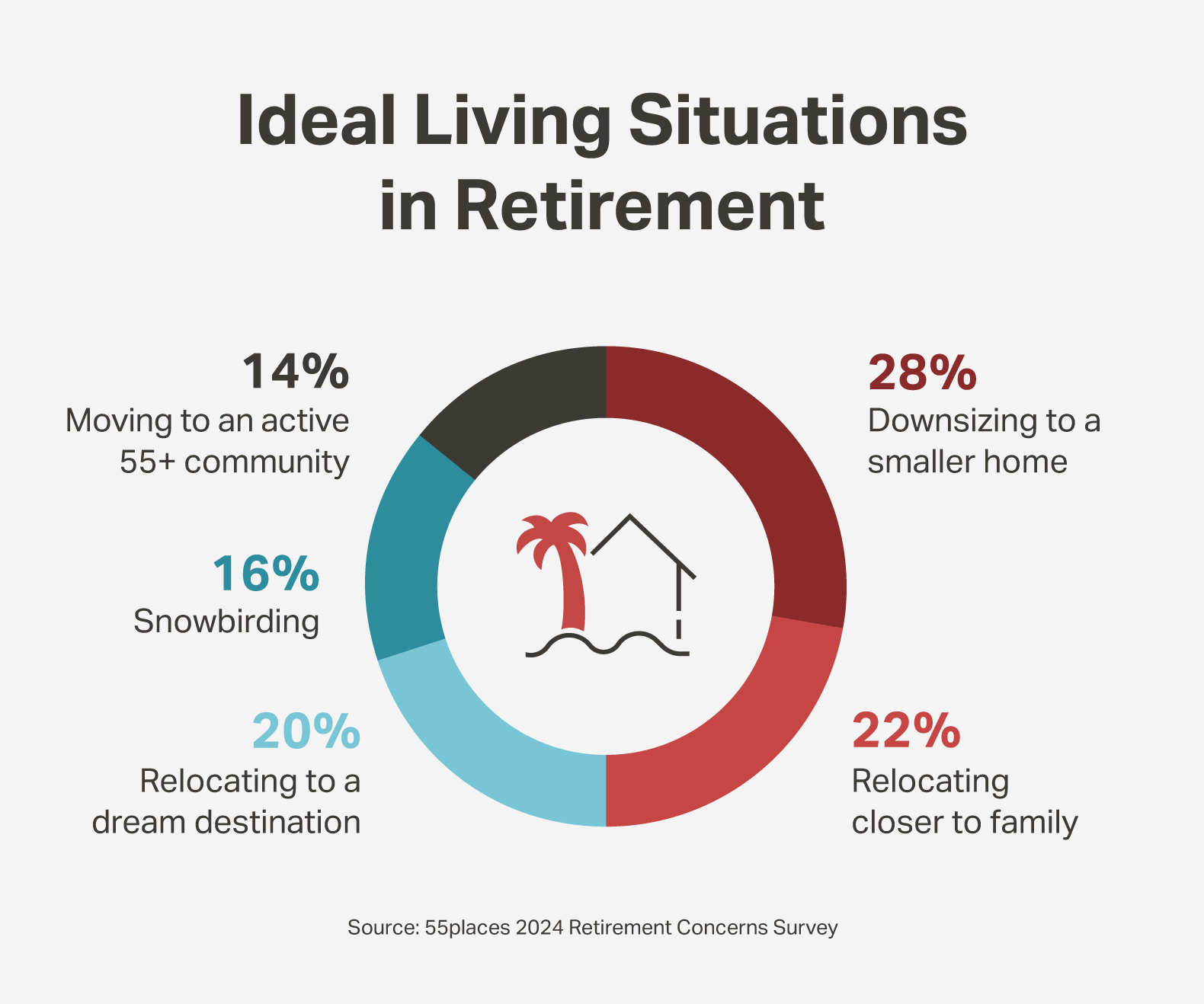
There’s a pervading sense that the ideal retirement situation is moving to a dream location or traveling south to warmer climates in the winter. But the reality is much simpler: Most Americans just want to downsize to a smaller home.
Relocating closer to family is the dream for many retirees. Americans almost equally consider the vicinity of family and a desirable destination important (22% and 20%, respectively). This makes sense considering the following:
- 21% of respondents reported that spending time with family is a key factor in living an active lifestyle.
- 25% of respondents find their purpose and sense of fulfillment in retirement from supporting their families, whether financially or emotionally.
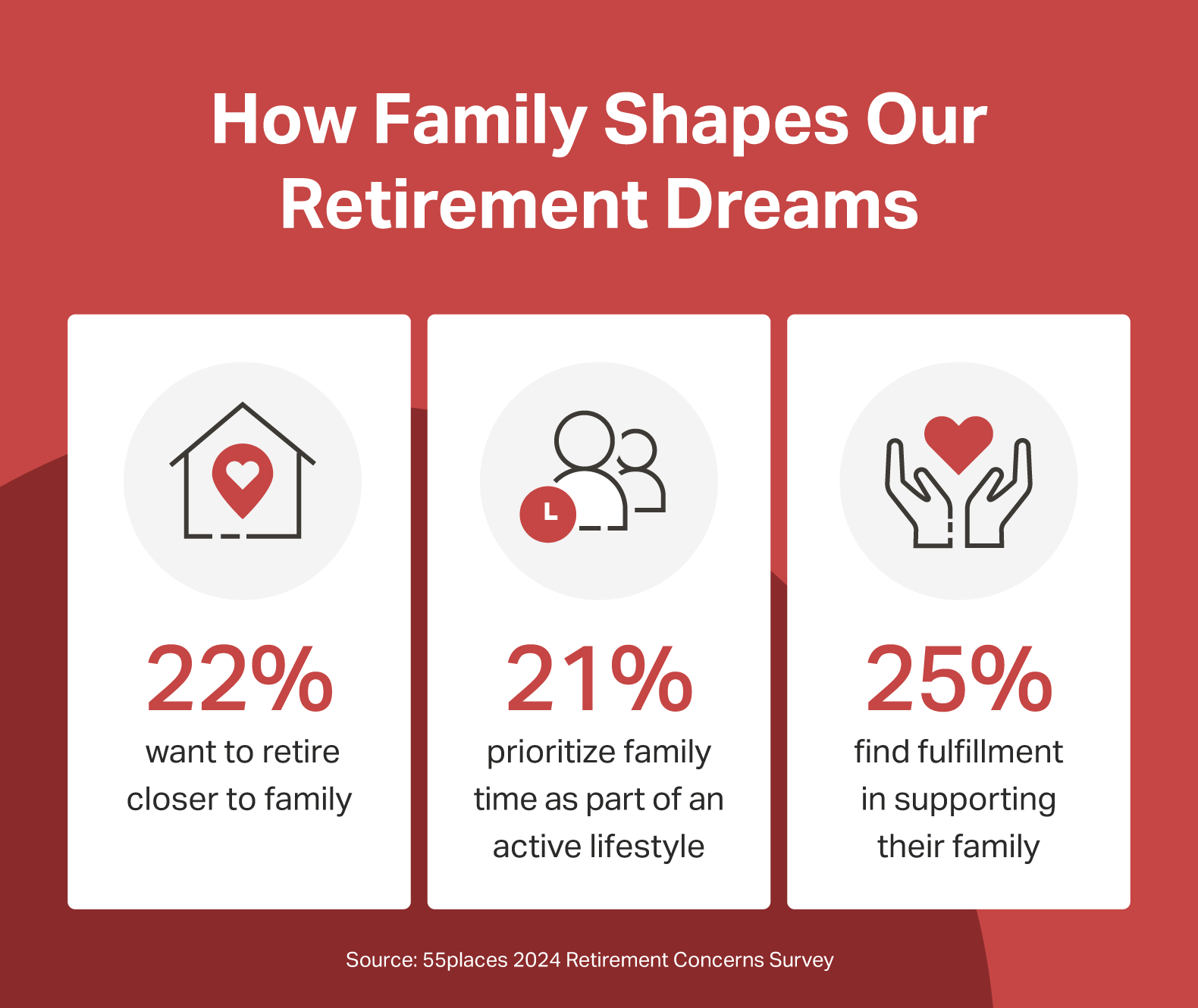
Just 14% of respondents identified moving to an active 55+ community as their ideal retirement living situation. Current active adult housing market trends suggest that the active adult market is actually a buyers’ market. So for those looking to downsize, purchasing a home in an active adult community may be easier and more cost-effective than purchasing a smaller home elsewhere.
Only 16% of respondents identified snowbirding as their ideal retirement situation. A snowbird travels to a warmer climate during the winter months. One possible explanation for this lower number may be that snowbirding often involves missing family events, and we know people prefer being close to family when they retire.
Half of our survey respondents reported that finances play a large role in their lifestyle choices in retirement. The additional costs associated with snowbirding—travel expenses, rent, or a second mortgage—may also deter some people over 55 from choosing this as their ideal retirement living situation.
Get Off the Couch: Physical Activity and Family Is Important
Wondering how to enjoy retirement? While it might be tempting to spend all your days relaxing on the couch and catching up on all your favorite shows, an active retirement lifestyle has a better chance of bringing you happiness.
For more than half of Americans, an active retirement lifestyle consists of staying active and spending time with family.
The most important factors in an active lifestyle for adults 55 and over include:
- Physical activity: 37%
- Spending time with family: 21%
- Traveling: 15%
- Pursuing your hobbies: 10%
- Relaxing: 10%
- Socializing with friends: 7%
Family plays a big role in why people choose to retire. According to the Federal Reserve, 51% of retirees decide to retire to spend more time with their families and do the things they didn’t have time for when they were working, like pursue interests outside of work.
There are plenty of options for people over 55 to participate in physical activity, whether it’s taking fitness classes, going on walks with friends, or playing low-impact sports like pickleball.
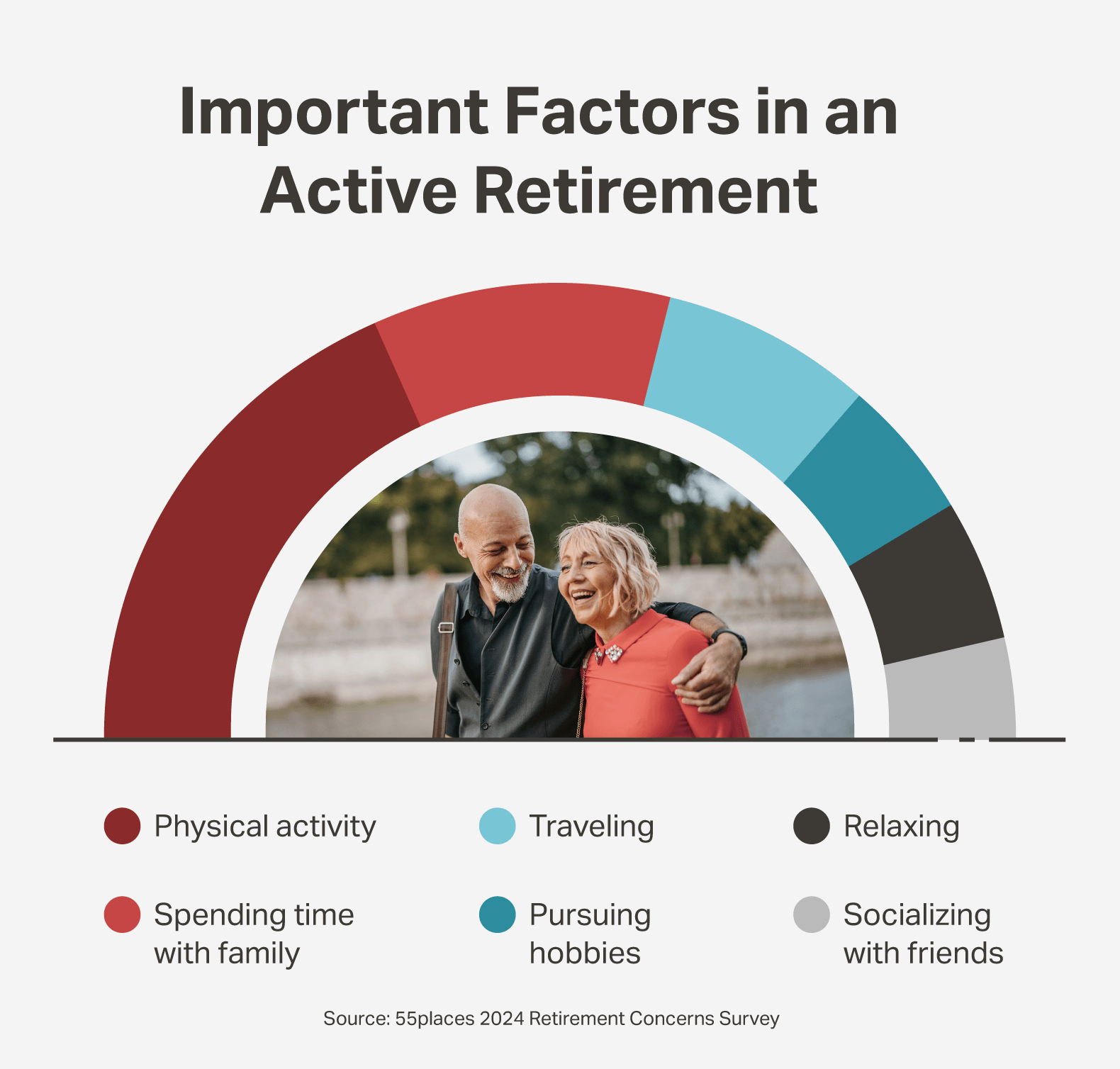
Family First Retirement: Find Fulfillment in Family and Hobbies
For a quarter of our respondents, supporting their families is the biggest source of purpose and fulfillment in retirement. For some, that means spending time with grandkids, taking family trips, and getting together for family dinners. For others, it means supporting their children financially.
Other sources of purpose and fulfillment in retirement include:
- Supporting your family: 25%
- Exploring new interests: 24%
- Pursuing your hobbies: 23%
- Volunteering in your community: 14%
- Starting a new venture: 7%
- Learning new skills: 8%
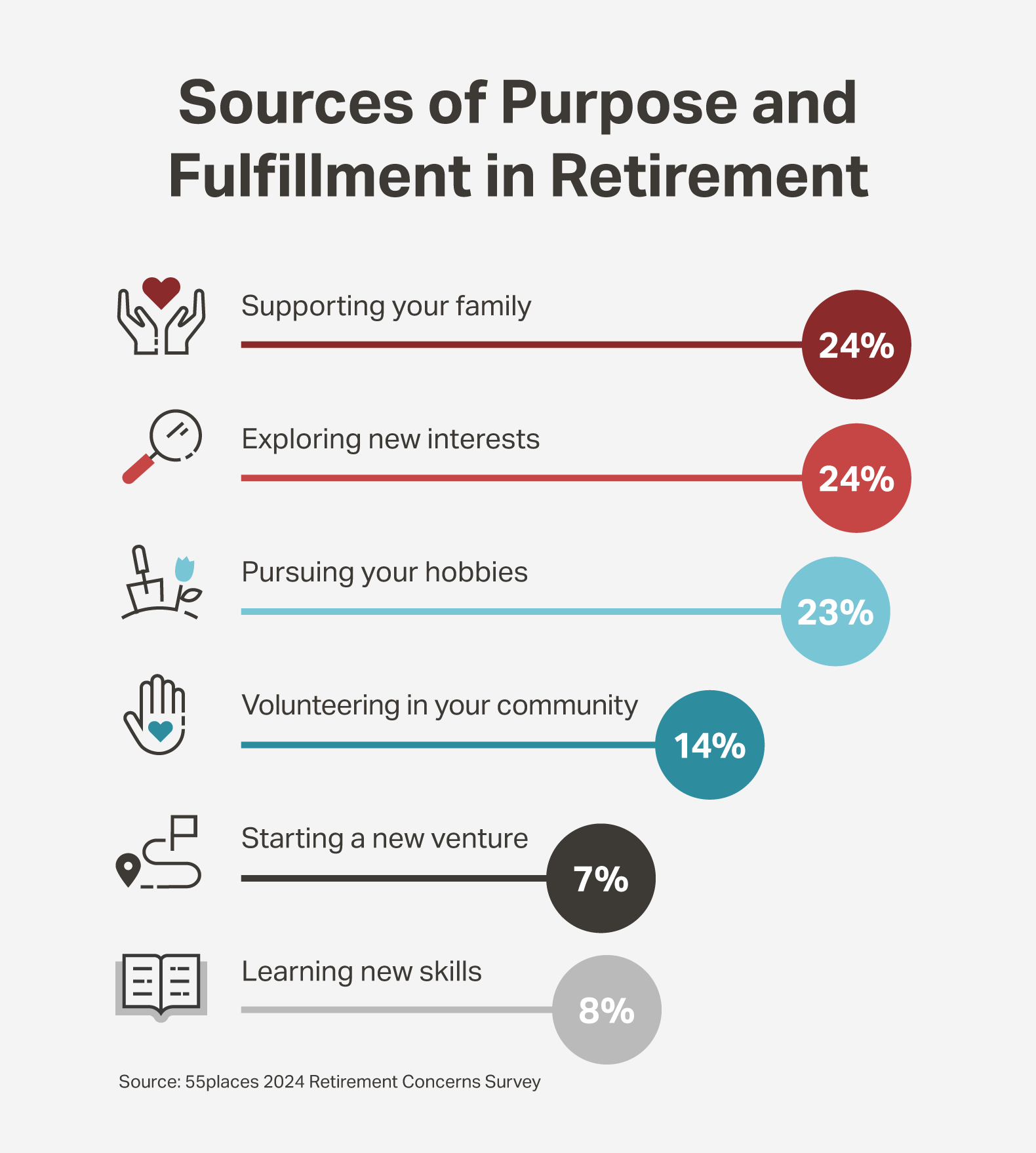
When it comes to Americans over 55, many abide by the can’t-teach-old-dogs-new-tricks mentality, but maybe they shouldn’t. According to a 2022 study from Columbia University, 32% of Americans over 65 have dementia or mild cognitive impairment. Learning new skills, whether a new language, artistic skill, or even new technology, improves cognitive function, especially in memory and attention.
According to our survey, Americans over 55 view retirement as a time to explore new interests like cooking or gardening (24%) and pursue existing hobbies (23%).
Engaging in hobbies you enjoy is important in maintaining your mental and physical well-being in retirement. According to a study from Psychosomatic Medicine, people who regularly engage in hobbies see greater life satisfaction and engagement and lower levels of depression. That’s probably the reason nearly 20% of pickleball players are over the age of 55, according to the Sports and Fitness Industry Association.
Retire in the Perfect Place With 55places
Regardless of what matters most to you in retirement, having a life that’s well-rounded in your eyes is important. Downsizing to an active adult community can help you prioritize what matters most to you, whether it’s health and wellness, financial security, or maintaining your freedom and independence while spending time with family and friends.
Explore your area’s latest active adult market trends data, or contact 55places to find the perfect active adult community for you!
Methodology
The survey of 1,012 adults ages 55 and over was conducted via SurveyMonkey Audience for 55places on June 25, 2024. Data is unweighted and the margin of error is approximately +/-3% for the overall sample with a 95% confidence level.

